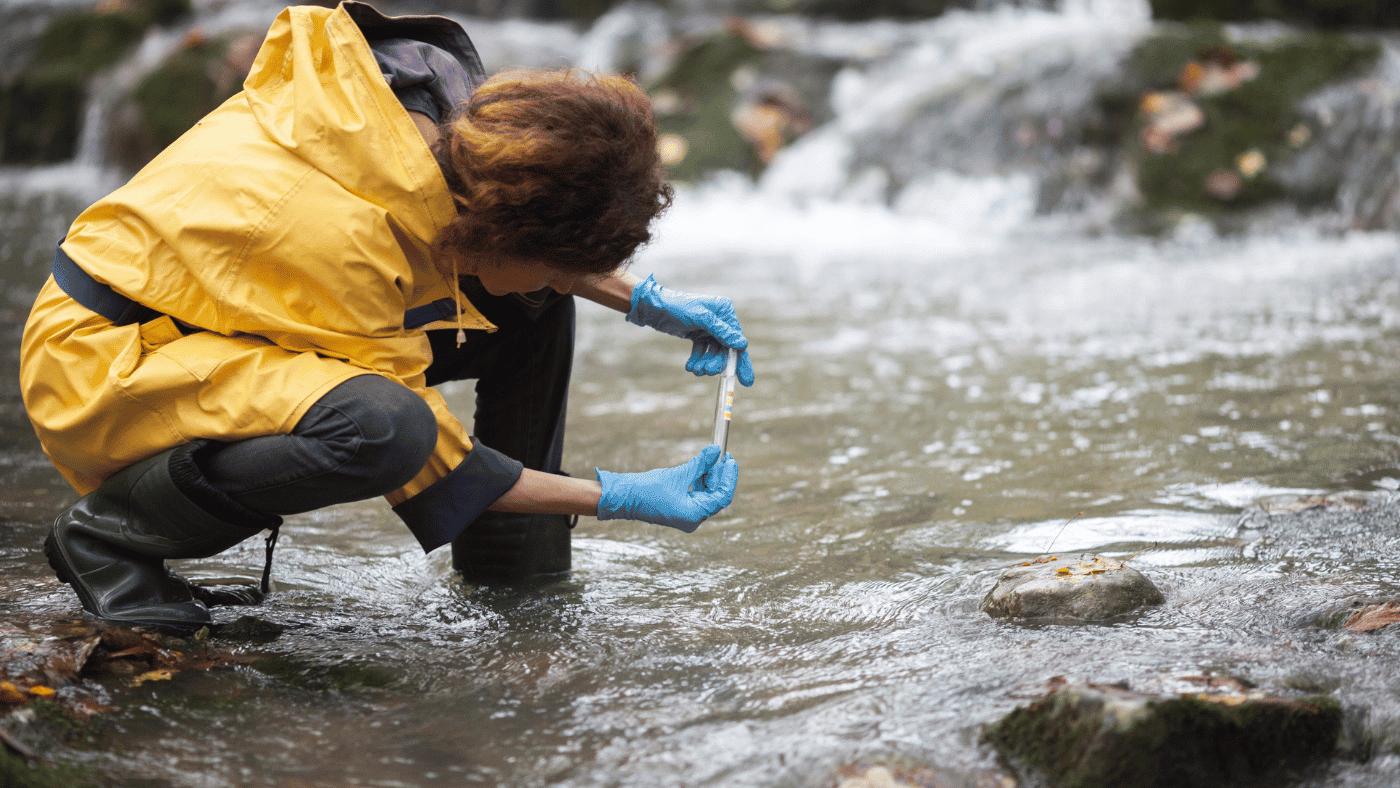Traditionally, the management of water resources has focused on surface water or groundwater as if they were separate entities. As we have developed more land and water resources, it is obvious that development of either of these resources affects the quantity and quality of the other. This post discusses interactions between groundwater and surface water in the environment in relation to the Environmental Forensics and Risk Management field as well as some challenges these interactions create when it comes to site remediation.
Ground and Surface Water Interaction: A Continuous Cycle
To begin, let’s revisit the hydrologic cycle and how the water we see on the surface and the water stored in our aquifers gets there. The hydrologic cycle describes the continuous movement of water above, on and below the surface of the Earth. Water on the Earth’s surface, i.e. surface water — occurs as streams, lakes and wetlands, as well as bays and oceans. Surface water also includes solid forms of water: snow and ice. Water below the surface of the Earth primarily is groundwater, but it also includes soil water, which is water containing nutrients that move into plant roots when plants take in water. This water enters the soil through large (macro) pores and is stored in many small (micro) pores. A very simple diagram, showing only major transfers of water between continents and the ocean, commonly portrays the cycle. Today, however, managing water resources needs to be viewed on a large range of scales that include a great deal of variability in time and space.
The major components of the hydrologic cycle are:
- Precipitation
- Evaporation
- Transpiration
- Percolation
- Runoff
In this article, percolation and runoff play important roles in the influence between groundwater and surface water.
The Movement of Water and Contaminates
Groundwater and surface water physically overlap at the groundwater/surface water interface through the exchange of water and chemicals. This exchange is vital: through it, surface water recharges underlying aquifers and water kept in these aquifers then discharges back to the surface through multiple pathways such as streambeds and groundwater-pumping wells. Unfortunately, this process also plays a major role in the transportation of contaminants from surface water to groundwater and the reverse.
The transportation of water and contaminants in the water depends on multiple factors, including:
- The strength of hydraulic connection .
- Geologic makeup of aquifer and/or the surrounding soils.
- The permeability of these geologic features, tidal or reservoir influence on groundwater and surface water levels.
- Fate and transport cycles of the contaminant in concern.
Common contaminants we see entering the groundwater/surface water interface are:
- Non-aqueous phase liquids (NAPL’s), such as gas, diesel or oils
- Trichloroethylene (TCE), metals, such as lead and mercury
- Many different pesticides
- Bacteria
- Per- and polyfluorinated (PFAS) substances — one of the newest and most difficult contaminants to remediate.
When Contamination Occurs, Remediation Requires Careful Consideration
Remediation of contamination influenced by both groundwater and surface water simultaneously requires consideration of a multitude of factors to identify the remediation pathway of choice.
The remediation process begins with a groundwater and surface water interaction study, which may include:
- Review of groundwater and surface water elevation
- Development of groundwater recharge/discharge maps
- Calculation of hydrologic flux zones
- Detailed discussion of the interaction
This process provides further information on what type or types of remediation will perform best given the environmental hurdles that may be apparent.
There are several common remediation tactics including:
- Bioremediation: engineered technology that modifies environmental conditions (physical, chemical, biochemical, or microbiological) to encourage microorganisms to destroy or detoxify organic and inorganic contaminants in the environment.
- Permeable Reactive Barriers (PRBs): provide a subsurface emplacement of reactive materials through which a dissolved contaminant plume must move through as it flows, typically under natural gradient. Treated water exits the other side of the PRB.
- Bioswales: vegetated, shallow, landscaped depressions designed to capture, treat, and filter storm water runoff as it moves downstream. This passive remediation can directly utilize the riparian zone, the transition area between land and aquatic ecosystems. The riparian zone provides habitat and can process contaminants before introduction to surface water. This remediation tactic is also directly impacts and influences two of the hydrologic cycle components that were mentioned before, percolation and runoff. Bioswales help to capture contaminants as they move through the vegetation therefore remediating runoff in the process and capturing contaminants before percolation can begin.
In summary, it is important to:
- Remember that the management of water resources embraces the combination of both groundwater and surface water, as they do not react independently of one another.
- Implementing a groundwater/surface water interaction study helps to better understand the relationship that a site has between both entities. This is also true when it comes to remediation of one or the other.
- Considering a variety of remediation options, rather than limiting thinking to just one or two, and to always be thinking ahead of the contamination itself.
HOW CAN VERTEX ASSIST
At VERTEX, we have expertise in the complexities of dealing with ground and surface water interaction, and remediation when contamination caused by the interaction of these resources is necessary. For more information, contact me at pehrman@vertexeng.com or call 888.298.5162 or submit an inquiry.




